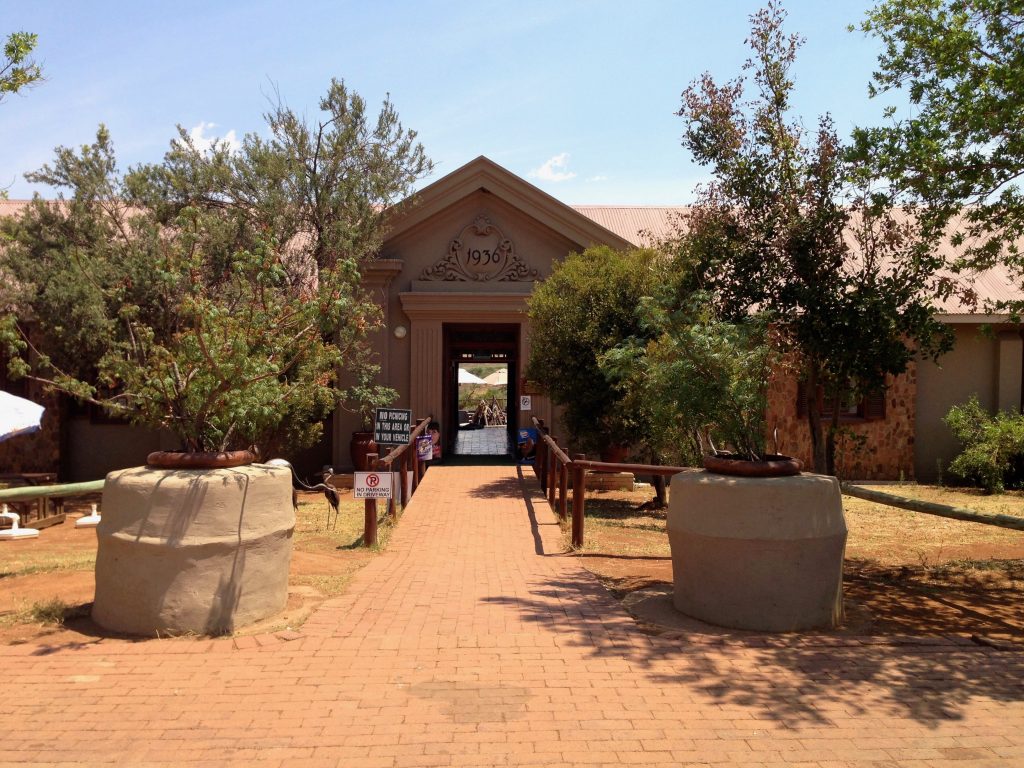When you tell people that you’re going to South Africa*, everyone wants to know if you’re planning to go on safari. A lot of well-meaning people chimed suggesting that I go to Kruger National Park, not realizing that Kruger is about an eight-hour drive from Johannesburg or that it’s the sort of place you need to visit for weeks. It’s definitely one of my dreams to visit Kruger, but it was never going to happen in the amount of time or budget I had for this trip. I did, however, manage to squeeze in a trip to Pilanesburg National Park and Game Reserve, which is less well-known but only a two-hour drive from Joburg.

Pilanesburg is a beautiful park. It is situated on an ecological transition zone, which means that it is home to a broad array of African wildlife. We saw lots of impala, elephants, zebra, hippo, wildebeest/gnu, giraffes, and warthogs, along with some harder-to-spot animals like ostrich, a white rhino, and even a leopard. Though I’m no photographer and of course I forgot my camera in the US (typical), I got some nice shots on my rented iPhone, especially when I held it up to the binoculars, because I am nothing if not resourceful.


Although I had a great time enjoying the natural landscape and seeing the animals, the heritage preservationist in me kept wondering about the history of the park. A few years ago, a friend sent me an old (but excellent) article on the formation of Serengeti National Park.** The article described how the formation of the park included the removal of evidence of human life, except for tribes that were deemed sufficiently “primitive” to not disturb visitor’s chance to see the “real” Africa. The author describes the impact of this decision not only on the displaced people, but on those who were forced to remain “primitive” so they would not lose their homes and land. Beyond this, he describes how this affected the way visitors see the park and their ideas about what Africa really is. This last idea in particular is something that has stayed with me, though of course it’s hardly unique to Africa–Frederick Jackson Turner conveniently erased Native Americans from the landscape for his frontier thesis, and scores of people were evicted from their homes in Appalachia to make way for national parks. This idea was brought home quite strongly for me when my tour guide mentioned that she thought of this place as the “real South Africa.”

The problem with this idea is that the landscape at Pilanesburg, just as at Serengeti, is manufactured. Before it became a park, this land was home to Zulu warriors, Boer farmers, and later the re-settled Bakgatla tribe during apartheid. The land has been inhabited by humans and hominids for millions of years, and these people evolved alongside the animals in the park. When it was converted into a game reserve, much of the evidence of human habitation was erased, barring one remaining official building which has been converted into a visitor center. The animals that live in the park were reintroduced as part of Operation Genesis in the 1980s.

The thing is, for all its natural splendor, this place is no less a managed landscape than a city. It is stunning, but is it anymore the “real South Africa” than Johannesburg or Soweto or Cape Town? So much of South African history is fraught and intense, and the specter of apartheid lingers because for half a century it dominated people’s lives and the landscape. A place like Pilanesburg can seem like an oasis from these hard truths; after all, there are no people here. But apartheid was here, too. It’s why the Boer farmers are no longer here; they sold their land to the apartheid government, which used it to create a homeland for the Bakubung tribe where they would be racially and ethnically segregated. Pilanesburg is not what South Africa used to look like–it’s what it looks like now, with all of the layers of meaning that exist in any cultural landscape, and that’s worth keeping in mind whether you are walking through an informal settlement or staring in awe at a leopard casually surveying his territory.

*After they ask about Ebola, of course.
**Neumann, Roderick P. “Ways of Seeing Africa: Colonial Recasting of African Society and Landscape in Serengeti National Park.” Cultural Geographies 2, no. 2 (April 1995): 149-169. (I cannot recommend this article highly enough.)





